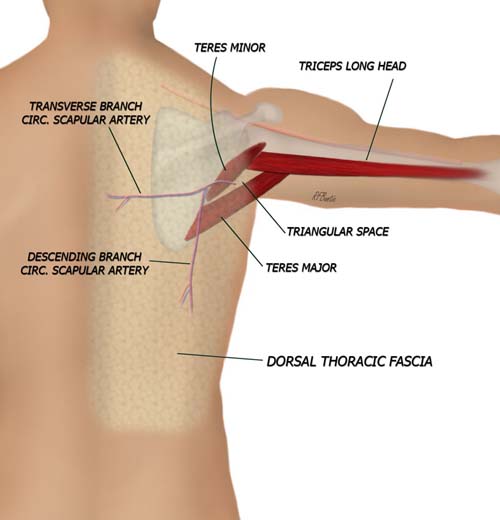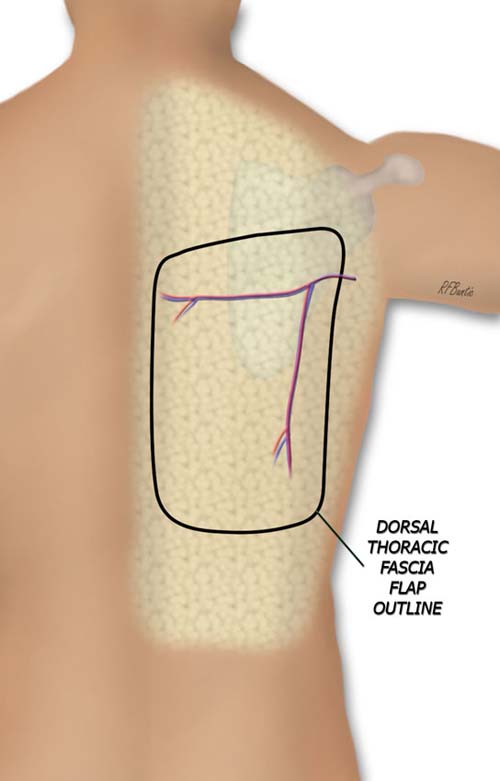Dorsal thoracic fascia flap
Anatomic considerations
The deep fascia of the back over the territory of the scapular and parascapular flaps provides a large potential area for thin tissue made entirely of fascia. The flap is large, thin and well vascularized and the anatomy is consitentent and reliable.
Vascular Anatomy
The transverse and descending branches of the circumflex scapular artery provide the major branches of the pedicle to this flap. The pedicle can be traced into the triangular space and followed to the suscapular artery and its origin at the axillary artery to gain length.

Vascular anatomy of the dorsal thoracic fascia. The circumflex scapular artery travels through the triangular space and divides into transverse and descending scapular branches. The dorsal thoracic fascia is supplied by these branches. Either one or both can be used depending on the size and orientation of the flap harvested.
